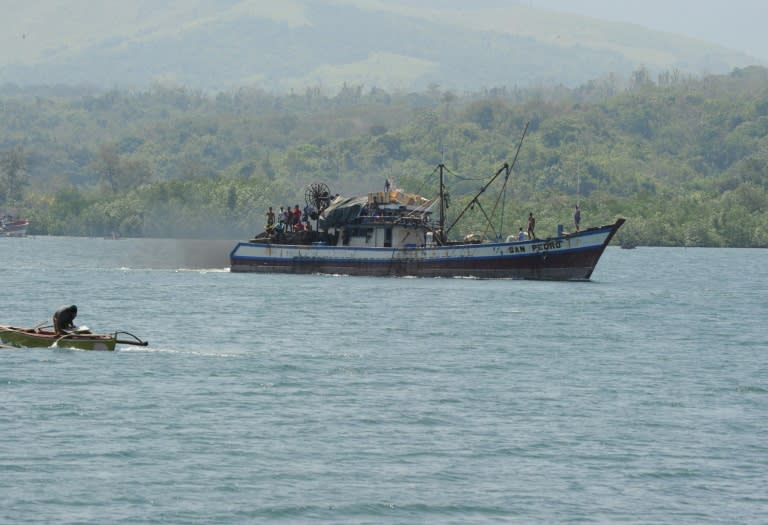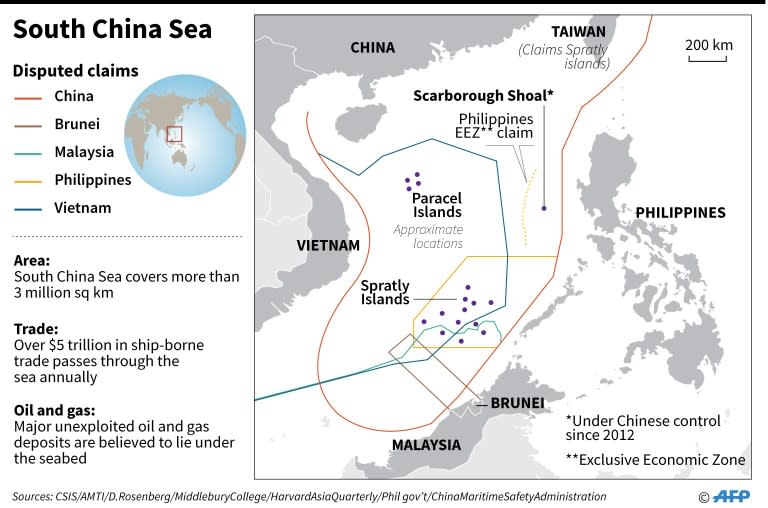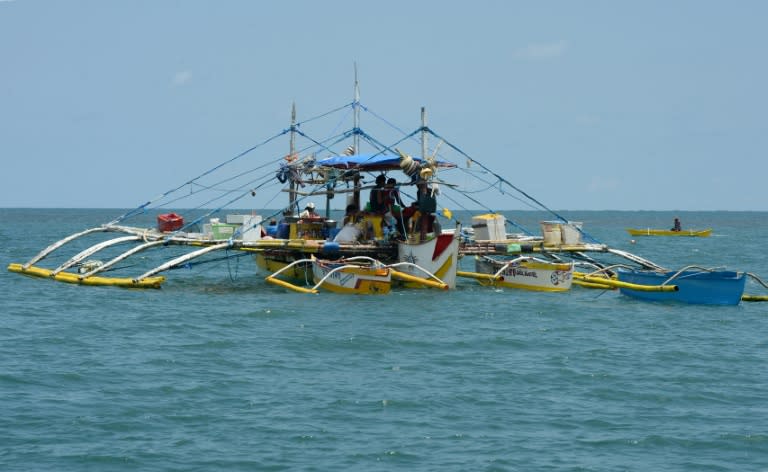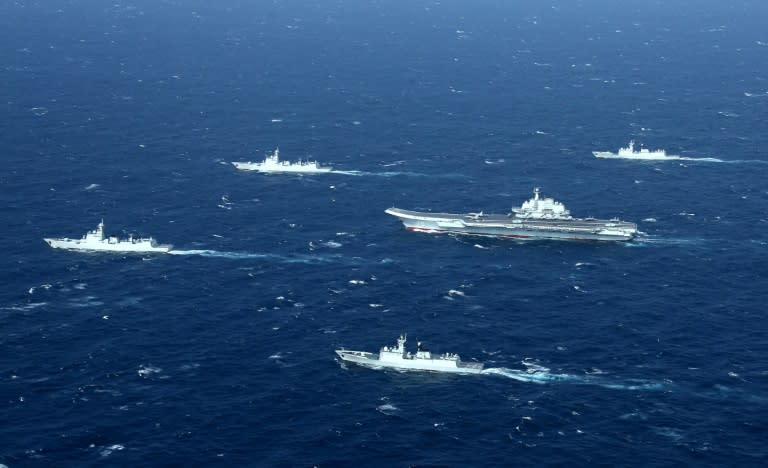Five facts on Asia's disputed Scarborough Shoal
The Philippines said Tuesday it expected China to try to build on a reef close to its coast in a move it called "unacceptable" and "very disturbing". Reclamation of Scarborough Shoal off the main Philippine island of Luzon in a disputed area of the South China Sea could escalate tensions between Beijing and Washington. Here are five facts about the shoal and why it is a potential flashpoint in Asia. - What is it? - Scarborough Shoal is a small ring of reefs that lies about 230 kilometres (140 miles) from the Philippines and 650 kilometres from the nearest major Chinese land mass, the southern island province of Hainan. It is rich with marine life that fishermen from the Philippines, China and Vietnam have tapped for generations. Although it is in the Philippines' Exclusive Economic Zone, China and Taiwan also claim it falls within their sovereign territory, part of a broader row over territorial rights in the South China Sea. - Why is it important? - Beijing has moved aggressively in recent years to cement its claims to most of the South China Sea, assert military control over the waters and thus weaken US influence. China has built islands and airstrips on reefs and islets in the Spratlys archipelago, a strategic location in the southern part of the sea. A US-based think tank released photos in December showing Beijing appeared to have installed weapons systems at its outposts in the area. Because of its position, another military outpost at Scarborough Shoal is seen as the last major physical step required to secure control of the sea. An outpost at the shoal would also put Chinese fighter jets and missiles within easy striking distance of US forces stationed in the Philippines. The shoal also commands the northeast exit of the sea, so a Chinese military outpost there could stop other countries' navies from using the vital stretch of waters. - What has happened there in the past? - The shoal became part of US territory when the Philippines was made an American colony through the Treaty of Paris in 1898. It was transferred to the Philippines upon independence in 1946. The Philippine navy then used it as a gunnery range for joint exercises with US forces, who had permanent bases nearby on Luzon island until 1991. China took effective control of the shoal after an April 2012 stand-off with the Philippine Navy, and blocked Filipino fishermen from entering the shoal. A UN-backed tribunal ruled last year that China's claims to the South China Sea had no legal basis. It also ruled that blocking Filipino fishermen at the shoal was illegal. However after new Philippine President Rodrigo Duterte visited Beijing in October, Filipinos were allowed to fish again around the shoal. Duterte then took a "unilateral" decision to make the lagoon at Scarborough a protected marine sanctuary, drawing criticism from local fishermen who feared another blockade. - What happens next? - China vowed to ignore the tribunal's ruling and press on with artificial island building. Yet it denied doing any construction work at the shoal. Then-US President Barack Obama reportedly warned Chinese President Xi Jinping last year against building an island at the shoal, establishing a so-called "red line". At his confirmation hearing the new Secretary of State Rex Tillerson said Washington should block Beijing's access to its artificial islands. Philippine Defence Secretary Delfin Lorenzana on Tuesday told AFP that China was "trying to get Scarborough" as part of a strategy to counter US influence in the region. - Risk of military confrontation? - China has proved it is willing to use deadly force to back its claims in the South China Sea. Beijing gained control of the Paracel Islands in 1974 following clashes with the South Vietnamese Navy that left about 50 Vietnamese troops dead. Vietnam and China fought a naval battle on Johnson Reef in the Spratlys in 1988 that killed about 70 Vietnamese military personnel. Washington does not want to get into a war with Beijing, but Trump and his cabinet picks have so far issued contradictory statements on the South China Sea.





